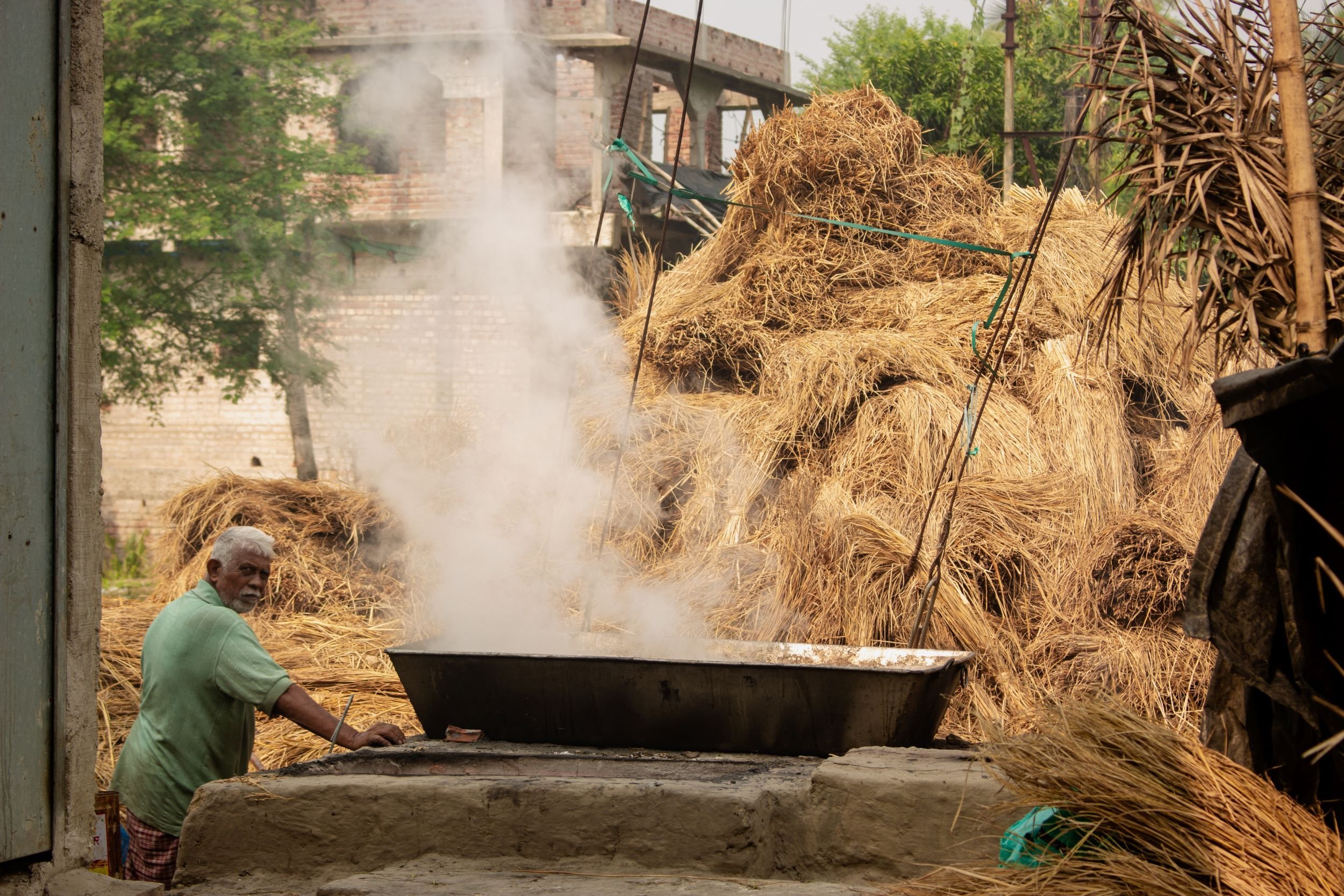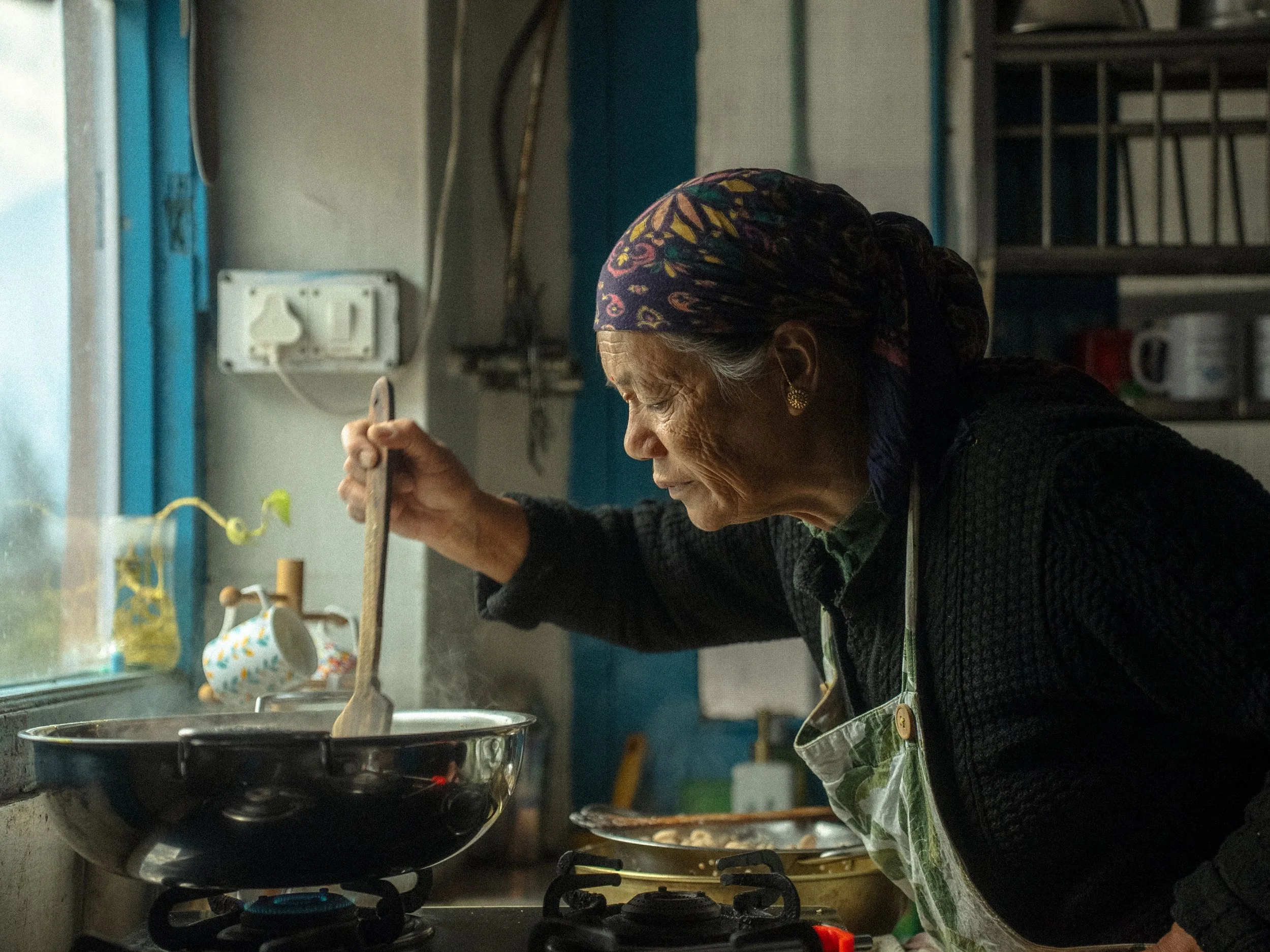Nolen Gur & the Symbiotic Relationship of the Shiuli and the Date Palm

Date Palm Jaggery, a traditional sweetener in Bengal, is a cultural symbol of the region. The process of extracting Nolen Gur involves climbing date palm trees and slicing the bark to release its sweet sap. This sap is a staple in festive celebrations and narrates the history and heritage of West Bengal. Pallabi Sen captures the process of Nolen Gur production, and the symbiotic relationship between the shiuli and nature.
It is a winter morning in West Bengal. In a small town 54 kilometres away from Kolkata, tappers (locally called shiuli or gachia) are ready to begin their day. Their task? The laborious process of making that prized winter delicacy, nolen gur or new jaggery.
Dulal Patra is one of the tappers we speak to. The role of collecting sap from the palm tree and turning it into jaggery is something his family has done for generations.
Bengal is generally considered the hub of jaggery-making. They say that even the air is sweet on winter morning, steeped in the aroma on nolen gur as the day progresses. Date palm jaggery is a traditional sweetener in Bengal, and the sap is a staple in festive celebrations, commonly found in sweets like rosogollas and sandesh. (Here’s a recipe for the Bangladeshi gur-er sandesh).
It is why people like Dulal Patra are indispensable.
The tree tappers are called shiuli or gachia in Bengal.
Earlier, in November, tappers like Dulal and Muna Patra wander through Bengal's more remote villages, collecting information about the date palm trees in the area. They contact tree owners and look at leasing the trees for several months. “We pay Rs 5,000 to Rs 7,000 to lease trees for the winter. This year, we leased 140 trees," says Muna.
A resident of Khejuri, Dulal and his family have rented a tiny 1 room-kitchen in Bagnan for the winter. They have displaced their home, like they do every year, so they can make nolen gur. Almost every family in their village has spread out to different parts of Bengal.
The process of collection of the sap begins with slicing of the bark of the date palm tree. It is usually done in the afternoon.
A wooden tube is inserted in the sliced bark and connected to a tin pot tied to the tree. This pot remains overnight, collecting the slowly dripping sap.
Earlier, the tappers would use clay pots but they faced huge losses as people would throw stones to crack the pots and collect the sap, either to drink it or make palm toddy.
Their days begin early. At 4:30 am, Dulal's son Rakesh, and hired help, Nabab, and Subhodip, climb the trees to bring down the pale yellow sap that has been collecting overnight in tin containers. The previous afternoon, they climb the same tree, slice the bark and wedge in a wooden tube. The tube is connected to a tin pot tied around the tree, which collects the sap dripping all night. After two days, they stop tapping for another two days, a process called jiron. “We have to collect those pots before sunrise. After sunrise, the sap will not turn into jaggery,” explains Muna.
The collected sap gets filtered and placed in big metal containers.
The tappers make sturdy, makeshift mud stoves to heat the sap.
Hay is used to provide fire. It takes six hours to turn into molasses.
The collected sap is filtered through a net and stored in a big tin container, which is then placed on mud stoves fuelled with hay. The sap is heated until it thickens to form molasses, a process that often takes over six hours.
When the gur is ready, they remove it from the flame to allow it cool and thicken for a few hours.
Cooled nolen gur in liquid form.
The gur gets strained again, then weighed and stored in bottles.
The liquid gur is sold by the kilo, often at makeshift shacks on highways.
Nolen gur is sold across the state, sometimes through makeshift shelters built by the highway. This year, the price for the liquid gur is Rs 120 per kilo, while the hard jaggery costs Rs330 per kilo.
Moulds are used to convert the liquid into a solid form (many add cane sugar to harden the liquid).
Pallabi Sen is a passionate photographer who likes to capture the myriad emotions of humans. Follow her on Instagram
ALSO ON GOYA























